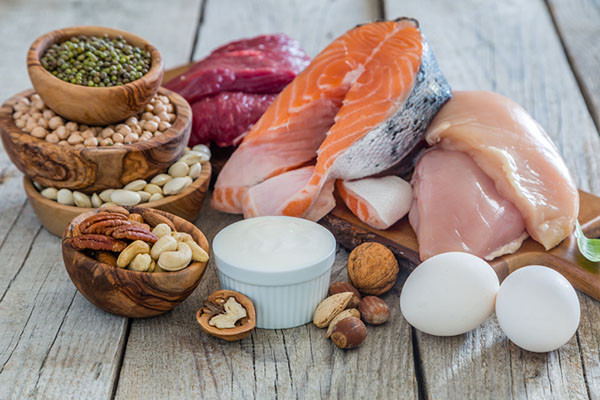In recent years, high-protein diets have gained considerable popularity due to their potential benefits in weight management, muscle building, and overall health. Protein is a crucial macronutrient that supports numerous bodily functions, including tissue repair, immune response, and hormone production. But what constitutes a good high-protein diet? This comprehensive guide explores the essentials of a high-protein diet, including its benefits, sources, meal planning tips, and considerations for different dietary needs.
Understanding Protein and Its Benefits
1. What Is Protein?
Protein is made up of amino acids, which are the building blocks of the body’s cells, tissues, and organs. There are 20 different amino acids, nine of which are essential, meaning they must be obtained through diet as the body cannot produce them. Proteins play a vital role in various physiological functions, including enzyme production, muscle contraction, and immune system regulation.
2. Benefits of a High-Protein Diet
- Muscle Building and Repair: Protein is essential for muscle growth and repair. Consuming adequate protein supports muscle synthesis and recovery, especially important for athletes and those engaging in strength training.
- Weight Management: High-protein diets can promote satiety, reducing overall calorie intake by making you feel fuller for longer. This can aid in weight loss and weight management.
- Improved Metabolism: Protein has a higher thermic effect compared to fats and carbohydrates, meaning it requires more energy to digest, which can boost your metabolism.
- Enhanced Bone Health: Some studies suggest that protein may help maintain bone health and prevent osteoporosis by supporting bone density and strength.
High-Protein Food Sources
1. Animal-Based Protein Sources
- Lean Meats: Chicken breast, turkey, and lean cuts of beef and pork are excellent sources of high-quality protein.
- Fish and Seafood: Salmon, tuna, shrimp, and other seafood provide protein along with beneficial omega-3 fatty acids.
- Eggs: Eggs are a versatile and complete protein source, containing all nine essential amino acids.
- Dairy Products: Greek yogurt, cottage cheese, and milk offer protein and additional nutrients like calcium and vitamin D.
2. Plant-Based Protein Sources
- Legumes: Beans, lentils, and chickpeas are rich in protein and fiber, making them a staple for plant-based diets.
- Tofu and Tempeh: These soy-based products are excellent protein sources for vegetarians and vegans.
- Nuts and Seeds: Almonds, chia seeds, hemp seeds, and pumpkin seeds provide protein along with healthy fats.
- Whole Grains: Quinoa, farro, and barley contain protein and are great additions to a balanced diet.
3. Protein Supplements
- Whey Protein: Derived from milk, whey protein is a complete protein with a high biological value, meaning it’s efficiently used by the body.
- Casein Protein: Also from milk, casein digests slowly, providing a sustained release of amino acids.
- Plant-Based Proteins: Pea, hemp, and rice protein powders are suitable alternatives for those avoiding animal products.
Designing a High-Protein Meal Plan
1. Calculate Your Protein Needs
The recommended dietary allowance (RDA) for protein is 0.8 grams per kilogram of body weight for the average adult. However, athletes, older adults, and those aiming for muscle growth may require more. A common recommendation is 1.2 to 2.0 grams of protein per kilogram of body weight, depending on individual goals and activity levels.
2. Incorporate Protein in Every Meal
To ensure a balanced high-protein diet, include protein sources in each meal and snack. For example:
- Breakfast: Scrambled eggs with spinach and whole-grain toast or a smoothie with Greek yogurt and berries.
- Lunch: Grilled chicken salad with mixed greens, chickpeas, and a vinaigrette dressing.
- Dinner: Baked salmon with quinoa and steamed broccoli.
- Snacks: A handful of almonds, a protein bar, or cottage cheese with fruit.
3. Balance Your Diet
While focusing on protein, don’t neglect other essential nutrients. Include a variety of vegetables, fruits, whole grains, and healthy fats to ensure a well-rounded diet. Fiber from vegetables and whole grains supports digestion and overall health.
Considerations and Potential Risks
1. Kidney Health
For individuals with pre-existing kidney conditions, excessive protein intake may strain kidney function. It’s essential to consult a healthcare professional before significantly increasing protein consumption.
2. Nutrient Imbalance
Relying heavily on protein without incorporating other food groups can lead to nutrient imbalances. Ensure that your diet includes a variety of foods to meet all your nutritional needs.
3. Digestive Issues
Some people may experience digestive issues like bloating or constipation when increasing protein intake. Gradually incorporating protein sources and drinking plenty of water can help mitigate these effects.
A good high-protein diet can offer numerous benefits, including muscle growth, weight management, and improved metabolic health. By including a diverse range of protein sources—both animal and plant-based—you can create a balanced and nutritious meal plan tailored to your needs and preferences. As with any dietary change, it’s important to approach it thoughtfully and consult with a healthcare provider or nutritionist to ensure it aligns with your individual health goals and requirements.















